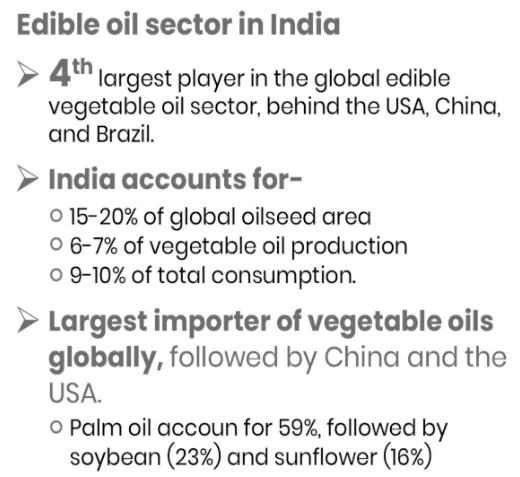4th India-EU Urban Forum on Smart & Sustainable Urbanisation
Context: The 4th India-EU Urban Forum was held in New Delhi, focusing on sustainable urban development.
About 4th India-EU Urban Forum
- It is Based on the 2017 Joint Declaration on Partnership for Smart and Sustainable Urbanization between India and the European Union (EU).
- Main Goal: To strengthen India-EU collaboration for sustainable urban growth.
- Key Themes Discussed:
- Urban Alliance and Integrated Approaches: Promoting coordinated urban development in Indian cities.
- Innovation and Circularity: Encouraging sustainable practices at the city level.
- Inclusive Urban Mobility: Enhancing public transportation as a tool for social inclusion.
- Importance of India-EU Collaboration
- Urban Impact: Urban areas account for two-thirds of global energy use, emissions, and pollution.
- The collaboration targets these critical issues, promoting sustainable urban development.
- Achievements Since 2017:
- Promoted sustainable city models and climate action.
- Involved over 40 Indian municipalities in climate-smart development.
- Supported urban mobility, waste management, and disaster risk reduction.
- Support for Government Programs: The collaboration aligns with the Ministry of Housing and Urban Affairs'( MoHUA’s) initiatives for smart, sustainable, and inclusive urban growth.
Kashi Tamil Sangamam 3.0
Context: Governor of Tamil Nadu flagged off the first batch of delegates at Dr. MGR Central Railway Station, Chennai.
About Kashi Tamil Sangamam 3.0
- Kashi Tamil Sangamam 3.0 is a 10-day event from 15th to 24th February 2025.
- It is part of the government’s ‘Ek Bharat Shreshtha Bharat Yuva Sangam programme.’
- Objective: Aimed at celebrating the historical and cultural links between Tamil Nadu and Kashi.
- Facilitate knowledge exchange among scholars, students, philosophers, traders, artisans, artists, and other participants.
- Promote cultural unity and enhance the understanding of Indian Knowledge Systems in line with New Education policy 2020.
- Organized by: The Ministry of Education, Govt. of India, with support from other ministries and the Government of Uttar Pradesh.
- IIT Madras is the sender institution and Banaras Hindu University (BHU) is the receiving institution.
- Historical Background
- Kashi Tamil Sangamam has been organized twice before: 2022 and 2023.
- Around 4000 delegates from Tamil Nadu participated in the earlier editions.
- Central Theme
- The theme for this edition is Maharishi Agasthyar and Mahakumbh, with Shri Ayodhya Dham as the backdrop.
- Aims to bring Tamil Nadu and Kashi closer, highlighting their cultural and civilizational bonds.
India’s Palm Oil Imports Plunge
Context: India’s palm oil imports dropped 65% year-on-year in January 2025, reaching a 13-year low.
About Palm Oil

- Palm Oil is extracted from the fruit of the African oil palm tree (Elaeis guineensis).
- One of the most widely used vegetable oils globally.
- Types of Palm Oil
- Crude Palm Oil (CPO): Extracted from the fruit pulp; Used mainly for cooking and food processing.
- Palm Kernel Oil: Extracted from the seed; Used in cosmetics, pharmaceuticals, and industrial applications.
- Both are colorless, odorless, and relatively tasteless.
- Global Production
- Indonesia & Malaysia account for 85% of global production.
- Other producers: Thailand, Colombia, Nigeria, Papua New Guinea.
- Palm Oil Production in India
-
- Major Producing States: Andhra Pradesh, Telangana, Kerala (98% of total production).
- India relies heavily on imports to meet domestic demand.
National Mission on Edible Oils – Oil Palm (NMEO-OP)
- Launched in: 2021
- Goal: Promote domestic oil palm cultivation and reduce dependence on imports.
- Target: Increase oil palm cultivation area from 3.70 to 10.00 lakh hectares by 2025-26.
Indian-Origin cow sets Guinness World Record
Context: Viatina-19, an Ongole breed cow, recently set a world record by selling for $4.82 million (~₹41 crore) in Brazil, surpassing Japan’s Wagyu and India’s Brahman breeds.
About Ongole Cattle Breed
- Native Breed: Ongole cattle are a Bos Indicus breed native to India, known for their strength, disease resistance, and heat tolerance.
- Historical Use: Traditionally used for agriculture, dairy, and breeding purposes, contributing significantly to livestock economies.
- Alternative Name: Also known as the Nellore breed due to its historical association with the Nellore district.
Geographical Distribution
- Native Region: Originates from the Prakasam district (formerly part of Nellore district)of Andhra Pradesh, India.
- Regions: Villages around Guntur, Vinukonda, Narasaraopet, Ongole, and Kandukur.
- Areas along the Gundlakamma and Alluru rivers.
Physical Traits
- Hump: Distinct and well-developed hump in males.
Special Features
- Heat Resistance: Can withstand harsh tropical climates, making it ideal for drought-prone areas.
- Disease Resistance: Strong immune system with resistance to foot and mouth disease and mad cow disease.
- Genetic Purity: Known for maintaining genetic purity and adaptability.
- A2 Milk Production: Produces A2 milk, which is rich in the A2 allele of Beta-Casein and considered healthier than A1 milk.
Cultural and Economic Significance
- Mascot of 2002 National Games: Veera, an Ongole bull, was the mascot of the 2002 National Games of India.
- Global Demand: Used extensively for crossbreeding in countries like Brazil, USA, and Australia to improve local cattle breeds.
- Example: Viatina-19, a Brazilian Ongole cow, set a record as the world’s most expensive cow in 2025.
Brahmagiri Wildlife Sanctuary
Context: The state government’s move to build a village for tribals in the buffer zone of Brahmagiri Wildlife Sanctuary raised objections.
Buffer zone
- Buffer Zone is a designated area around a wildlife sanctuary that helps protect the sanctuary’s biodiversity and ecosystem.
About Brahmagiri Wildlife Sanctuary
- Location: It lies in the core of Western Ghats in Kodagu district (Karnataka).
- The sanctuary gets its name from its Highest point (Brahmagiri Peak) which is 1607 m in height.
- Rivers: Lakshmana Tirtha River originates in the sanctuary and is a tributary of the Cauvery River.
- Flora: Primary vegetation of the sanctuary includes evergreen and semi-evergreen forests, shoal forest patches in grasslands, and bamboos.
- Surrounded by: Coffee and cardamom plantations.
- Fauna: Home of the lion-tailed macaque (endangered on the IUCN Red List).
BRAHMOS-NG
Context: The next-generation BrahMos missile, known as BrahMos NG, is approaching its first flight test, slated for 2026, with production set to commence in 2027-28.
About Next Generation BrahMos Missile (BrahMos NG)
- Development: The BrahMos NG (Next Generation) missile system is in advanced stages of development.
- Collaboration: Developed under the India-Russia Joint Venture.
Key Features of BrahMos NG
- Design:
- Compact: Designed to be compatible with smaller delivery systems.
- Performance:
- Range: 290 km (same as the older version).
- Speed: Up to Mach 3.5 (supersonic speed).
- Radar Cross-Section: Reduced compared to the older version.
- Seeker: Equipped with a homemade Active Electronically Scanned Array (AESA) radar.
- Compatibility: Can be fitted on Sukhoi-30MKI fighter aircraft and Tejas Light Combat Aircraft (LCA).
Strategic Importance
- Defense Modernization: Enhances India’s supersonic cruise missile capabilities.
- Strengthens air defense and precision strike capabilities.
- Export Potential:
- Philippines: Already supplied three BrahMos missile batteries under a $375 million deal (2022).
- First foreign buyer of BrahMos missiles
- Indonesia: In advanced talks for a $450 million deal.
- Interest from African and West Asian countries.
- Indigenous Development: Reflects India’s growing defense manufacturing and export capabilities.
![]() 14 Feb 2025
14 Feb 2025


